I posted about plants' reaction to fire in the Santa Monica Mountains before and had always intended for that topic to become a series. The Springs fire of 2013, which burned parts of the western Santa Monica Mountains, prompted me to revisit the topic.
Among the various thoughts and emotions I've had on reading the news and seeing photos, I recall a conversation I had with someone on a trail maintenance outing with the SMMTC on Old Boney Trail in Point Mugu State Park. He was describing that when an area of chaparral has not burned for a long time, a handful of plants tend to dominate the terrain, crowding out opportunities for competitors. Such would describe some of the area that has just now burned. It will be interesting to see what plants emerge in these areas next year after winter rains.
As I said in volume 1: "While there is a natural and understandable tendency to lament the impact these fires have on our mountains, it does provide a unique opportunity to some plants that need the heat, nutrients or exposure to set seed or properly thrive. Other plants may have certain abilities to bounce back from a fire, usually due to significant root structures or hardened stems."
The following plants are some "fire followers" which I've featured in plant-of-the-months since the first fire post. Three other plants with some fire characteristics - Star Lily, Stinging or Nettle Lupine, and Yucca are mentioned in the earlier post.
| Plants You Might See | Brief Description of Plant |
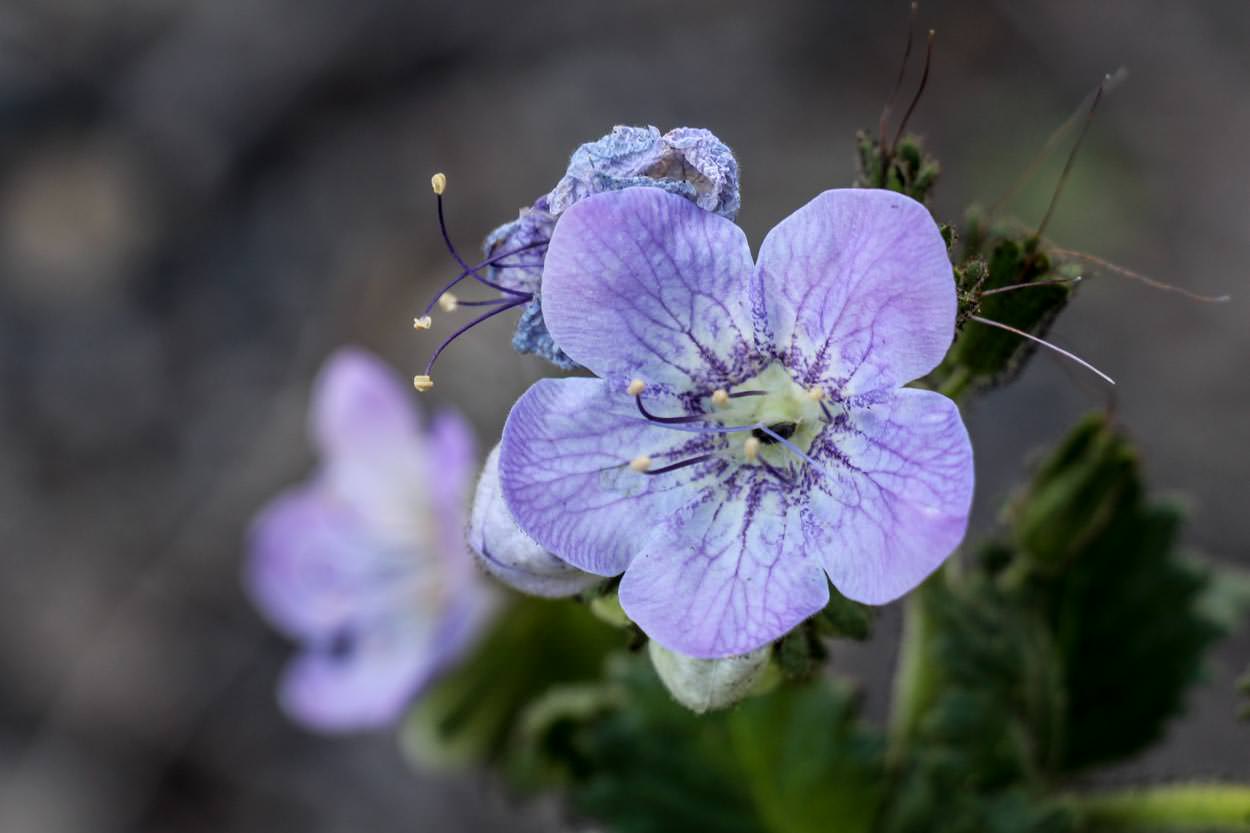
|
Large Flowered Phacelia
Scientific Name: Phacelia grandiflora
Family: Hydrophyllaceae, Waterleaf family
Plant Type: Annual
Phacelias as a group are considered fire followers. Large Flowered Phacelia is the most abundant of this group. A sturdy-looking plant with showy, saucer-shaped lavender flowers. The petals have darker purple streaks producing a veined look. Grandifloria the flowers are larger than in other Phacelia species - up to 2 inches in diameter.
|
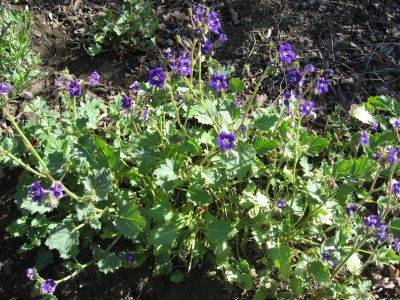
|
Parry's Phacelia
Scientific Name: Phacelia parryi
Family: Hydrophyllaceae, Waterleaf family
Plant Type: annual
The deep purple color of Parry's Phacelia makes this plant easy to spot in springtime. It blooms from March to May and is often found in bare or disturbed ground, usually on slopes. If an area has burned recently, Parry's Phacelia is frequently found there. It is common in the western Santa Monica Mountains but somewhat rare to the east.
|
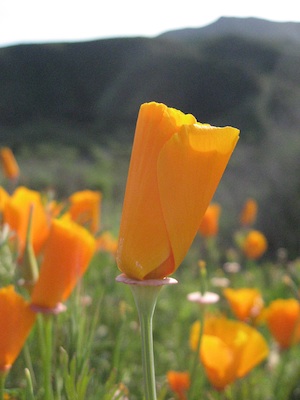
|
California Poppy
Scientific Name: Eschscholzia californica
Family: Papaveraceae, Poppy family
Plant Type: annual, sometimes perennial
California Poppy is one of the first plants to repopulate an area that has experienced fire. Two other poppies, the Fire Poppy and Wind Poppy, are usually only encountered after a fire, when the ash encourages seed germination. California Poppy's leaves are 1 to 2 inches long and cleft into many segments, forming a rosette at the plant's base. The solitary flowers are found nodding at the ends of 2 to 6 inch long stems, with 4 petals up to 2 1/2 inches long. The petals' color ranges from vibrantly orange to bright yellow, or sometimes a gradation of both. Petals close up at the close of day and may not open on a cloudy day, hence the plant was sometimes referred to as "the drowsy one". A small light pink disk called a torus separates the petals from the stem; if you encounter a plant that looks like the poppy but is absent the torus, you are instead looking at Eschscholzia caespitosa, the California collarless poppy.
|
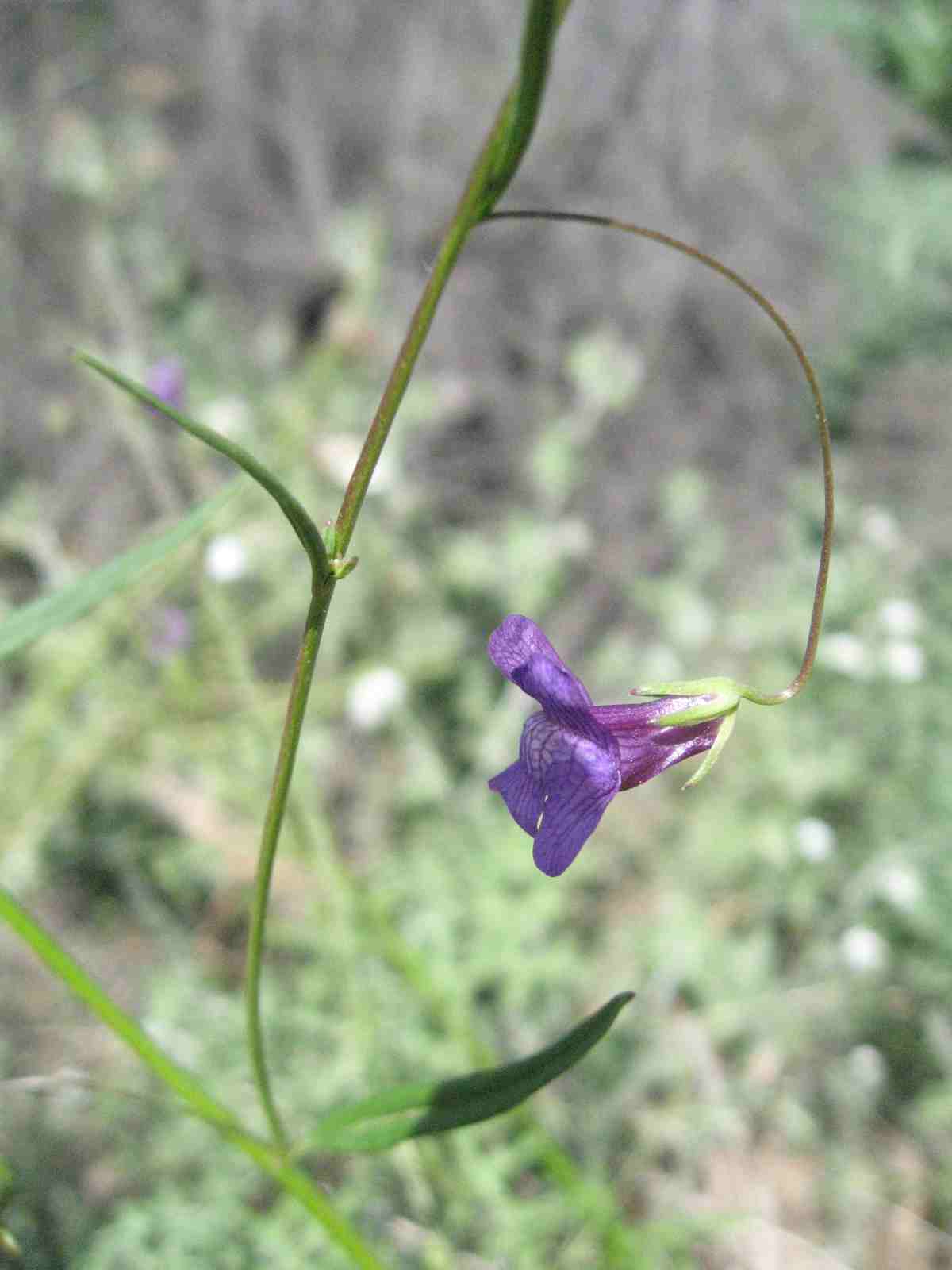
|
Twining Snapdragon
Scientific Name: Antirrhinum kelloggii
Family: Scrophulariaceae, Figwort family
Plant Type: Annual
Twining snapdragon is a vine-like plant that often clings to other plants or dry brush for support. It is often hard to spot due to its size, but when you do come across it you will know it. Its distinctive snapdragon-shaped flowers appear from February to May and are usually lavender to purple, but can also have varying shades of blue or white. The rest of the plant is very slender, with a central stem supporting several arching branchlets, each near a slender leaf up to a few inches in length. A flower appears 2 to 4 inches down each of these hairlike stems and is about 1/2 inch in diameter. The stems are frequently a reddish green color. The base of the plant is a bit more filled out but otherwise similar in appearance.
|
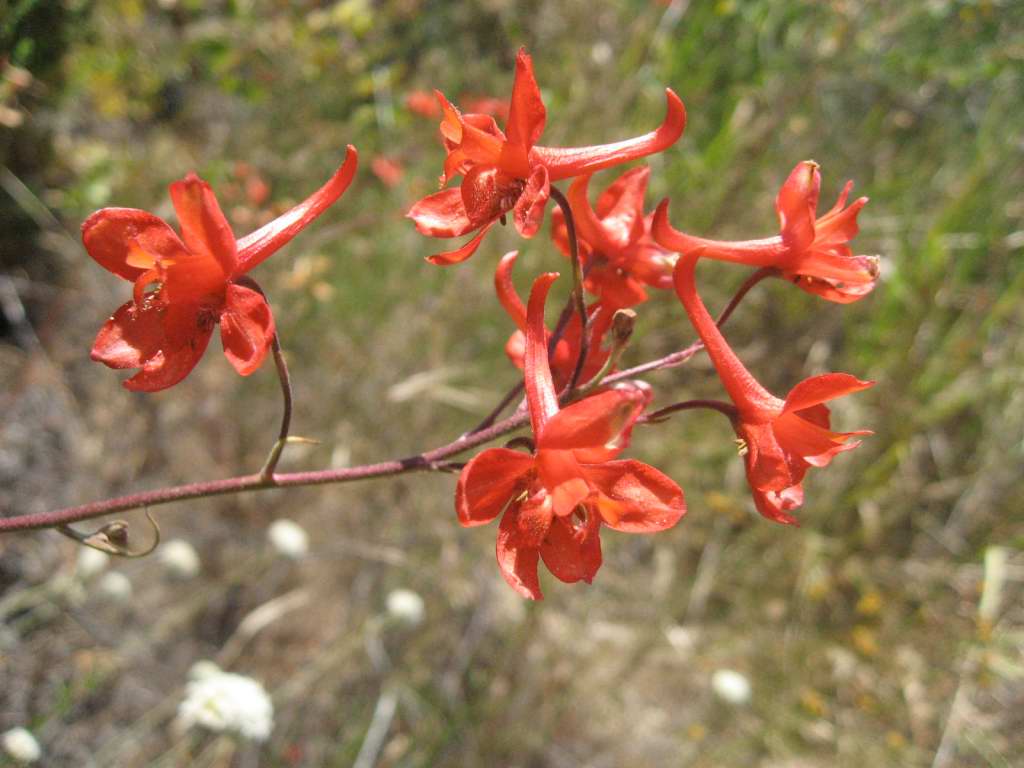
|
Scarlet Larkspur
Scientific Name: Delphinium cardinale
Family: Ranunculaceae, Buttercup family
Plant Type: Perennial
This plant is not specifically a fire follower, but is often encountered more frequently after a fire due to improved growing conditions. Reaching heights up to
sixty inches, this is the tallest Larkspur you will encounter.
Blooming from May to July, the "spur" is a giveaway for identifying this plant. About one-to-two-inches long, the
spur is actually one of its 5 sepals. The four petals are mostly red, with 2 having yellow-tinges. Multiple flowers with stems about 2
inches long appear on this tall plant. Both basal leaves and alternating leaves appear along the stem, but by the time of blooming,
they have withered and are not noticeable.
|
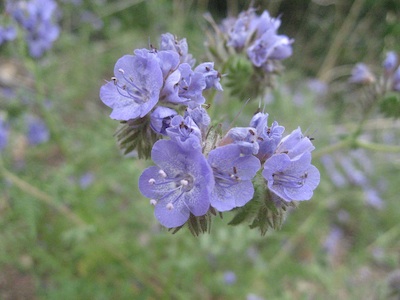
|
Fern Leaf Phacelia
Scientific Name: Phacelia distans
Family: Hydrophyllaceae, Waterleaf family
Plant Type: annual
Fern-Leaf Phacelia is a many-branching annual which blooms from March to June. It grows in dry places and, like other Phacelias, is quick to reestablish after a fire. The foliage, as its name implies, resembles that of ferns, with pinnately divided oblong leaves in a lush green color. Leaves and stems are hairy. Flowers unfold from a coil and are about an half-inch in diameter. Their color ranges from lavendar to a deep blue-violet. They have 5 petals and 5 stamens, with the stamens not extruding much beyond the petals.
|
Contributed by Liz Baumann
References:
Wildflowers of the Santa Monica Mountains, by Milt McAuley
Flowering Plants: The Santa Monica Mountains, Coastal and Chaparral Regions of Southern California, by Nancy Dale
Roadside Plants of Southern California, by Thomas J. Belzer
California Native Plants for the Garden, by Carol Bornstein, David Fross, and Bart O'Brien
California Herbal Remedies, by LoLo Westrich
Contributed by Liz Baumann
Notice: Undefined index: potm_genus in
/home/smmtorg/public_html/plantofthemonth/plant_ref.php on line
3
ERROR: Unable to connect to MySQL server! Error: Access denied for user 'smmtorg'@'localhost' (using password: YES)





